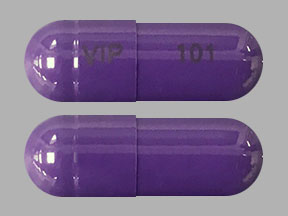Vilamit MB and Alcohol/Food Interactions
There are 4 alcohol/food/lifestyle interactions with Vilamit MB (hyoscyamine / methenamine / methylene blue / phenyl salicylate / sodium biphosphate).
Sodium Biphosphate Alcohol (Ethanol)
Major Drug Interaction
The following interaction applies only to products containing sodium biphosphate that are used for bowel cleansing. It does not apply to products containing sodium biphosphate that are used for other, non-laxative related purposes. Bowel cleansing with sodium biphosphate can cause kidney failure, in some cases up to several months after the procedure. Although it rarely occurs, the risk is increased in individuals receiving treatment with phenyl salicylate, especially if they are also elderly or frail. You may need a dose adjustment or special tests to safely use both medications. Combining these medications may also increase the risk of dehydration and electrolyte abnormalities. In severe cases, dehydration and electrolyte abnormalities can lead to irregular heart rhythm, seizures, and kidney problems. You should use sodium biphosphate exactly as prescribed by your doctor, and drink plenty of clear fluids before, during, and after the cleansing process to keep yourself hydrated. Your doctor may also recommend an electrolyte rehydration solution that you can use. Talk to your doctor if you have any concerns. It is important to tell your doctor about all other medications you use, including vitamins and herbs. Do not stop using any medications without first talking to your doctor.
Hyoscyamine Alcohol (Ethanol)
Moderate Drug Interaction
Ask your doctor before using hyoscyamine together with ethanol (alcohol). Use alcohol cautiously. Alcohol may increase drowsiness and dizziness while you are taking hyoscyamine. You should be warned not to exceed recommended dosages and to avoid activities requiring mental alertness. If your doctor prescribes these medications together, you may need a dose adjustment to safely take this combination. It is important to tell your doctor about all other medications you use, including vitamins and herbs. Do not stop using any medications without first talking to your doctor.
Sodium Biphosphate Food/Lifestyle
Moderate Food Interaction
Consumer information for this interaction is not currently available.
ADJUST DOSING INTERVAL: Bowel cleansing products can increase the gastrointestinal transit rate. Oral medications administered within one hour of the start of administration of the bowel cleansing solution may be flushed from the gastrointestinal tract and not properly absorbed.
MANAGEMENT: Patients should be advised that absorption of oral medications may be impaired during bowel cleansing treatment. Oral medications (e.g., anticonvulsants, oral contraceptives, antidiabetic agents, antibiotics) should not be administered during and within one hour of starting bowel cleansing treatment whenever possible. However, if concomitant use cannot be avoided, monitoring for reduced therapeutic effects may be advisable.
Switch to professional interaction data
Hyoscyamine High Blood Pressure (Hypertension)
Minor Potential Hazard, Low plausibility
anticholinergics - hypertension
Cardiovascular effects of anticholinergics may exacerbate hypertension. Therapy with anticholinergic agents should be administered cautiously in patients with hypertension.
Switch to professional interaction data
Vilamit MB drug interactions
There are 787 drug interactions with Vilamit MB (hyoscyamine / methenamine / methylene blue / phenyl salicylate / sodium biphosphate).
Vilamit MB disease interactions
There are 37 disease interactions with Vilamit MB (hyoscyamine / methenamine / methylene blue / phenyl salicylate / sodium biphosphate) which include:
- autonomic neuropathy
- GI obstruction
- glaucoma
- obstructive uropathy
- reactive airway diseases
- myasthenia gravis
- infectious diarrhea
- inflammatory bowel disease
- intestinal obstruction disorders
- crystalluria
- gout
- liver disease
- methemoglobinemia in G-6-PD
- hypocalcemia
- phosphate imbalance
- GI toxicity
- renal dysfunction
- Reye's syndrome
- electrolyte imbalance
- cardiac disease
- tachycardia
- coronary artery disease
- gastric ulcer
- gastroesophageal reflux
- ulcerative colitis
- liver disease
- renal failure
- renal dysfunction
- anemia
- coagulation
- dialysis
- G-6-PD deficiency
- hepatotoxicity
- hypertension
- hyperthyroidism
- diarrhea
- fever
More about Vilamit MB (hyoscyamine / methenamine / methylene blue / phenyl salicylate / sodium biphosphate)
- Vilamit MB consumer information
- Check interactions
- Compare alternatives
- Drug images
- Side effects
- Dosage information
- Drug class: urinary antispasmodics
- En español
Related treatment guides
Drug Interaction Classification
| Highly clinically significant. Avoid combinations; the risk of the interaction outweighs the benefit. | |
| Moderately clinically significant. Usually avoid combinations; use it only under special circumstances. | |
| Minimally clinically significant. Minimize risk; assess risk and consider an alternative drug, take steps to circumvent the interaction risk and/or institute a monitoring plan. | |
| No interaction information available. |
See also:
Further information
Always consult your healthcare provider to ensure the information displayed on this page applies to your personal circumstances.


